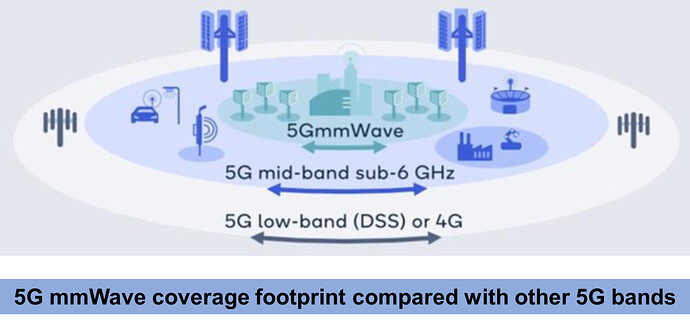-
My friend: Hi Ibrahim, I have a question for you.
- Me: Please, go ahead.
-
My friend: Why 5G mmWave deployment is late in mobile networks around the world?
- Me: Actually, 5G mmWave is a new band introduced firstly in 5G to provide a high speed and low latency. The high speed is due to the high BW available which can be up to 400 MHz per carrier and the low latency is due to the use of high SCS of 120 KHz which will provide a slot duration of 0.125 ms. So, 5G mmWave is really offering a very fantastic performance, but it has also some limitations which delayed the deployment on a large scale.
-
My friend: But what are the obstacles facing the 5G mmWave deployment?
- Me: Unfortunately, 5G mmWave is having a small cell range due to its high frequency band which is from 24.25 till 52.6 GHz as per Rel.15 and then was extended up to 71 GHz in Rel.17, so this requires a lot of 5G mmWave cells to provide adequate coverage which means more money. Also, the high imbalance between the DL and UL coverage footprint due to the significant difference between the antenna array gain deployed at the gNB compared with the UE antenna gain which will make the UL much lower than the DL coverage footprint. Lastly, the high UE power consumption is one of the most critical barriers for application of 5G mmWave technologies on smartphones and it is not only drains the UE battery quickly, but also causes over-heating problems that would further affect the UE performance and potentially reduce the life cycle of the battery.
-
My friend: So, are there any solutions to deal with these issues?
- Me: Of course, the extended cell range feature can be used to extend the cell footprint from normally 1 km only up to 11 km as tested by some vendors recently, also we should use antenna arrays with high no. of antenna elements to provide high beamforming gain. But as the UL is more limiting, so we need to enhance it by using low-band spectrum for the UL as it has better propagation characteristics which can be done by using SUL (Supplementary UL) feature or DC (Dual connectivity) either via ENDC where the UL will be the 4G cell, or NR-DC between two gNBs supporting FR1 and FR2 or simply using NR CA between FR1 and FR2. Also, we can enhance UL via the use of high power UE as several commercial high power UE devices, particularly CPEs, are now available. And we can use smart repeaters or smart DAS solutions to improve the coverage as well. Lastly, UE power consumption can be overcome by using DRX, improving the coverage, so UE won’t transmit high UL power, usage of the RRC-Inactive state, and use of the Mobile-Originated Small Data Transmission (MO-SDT), which enables data and/or signaling transmission of the UE while remaining in the RRC INACTIVE state, i.e., without transitioning to RRC CONNECTED.
-
My friend: Thank you so much.
- Me: You are welcome.
LinkedIn: Ibrahim Sayed, PMP on LinkedIn: #5g #5gnr #5gtechnology | 15 comments
